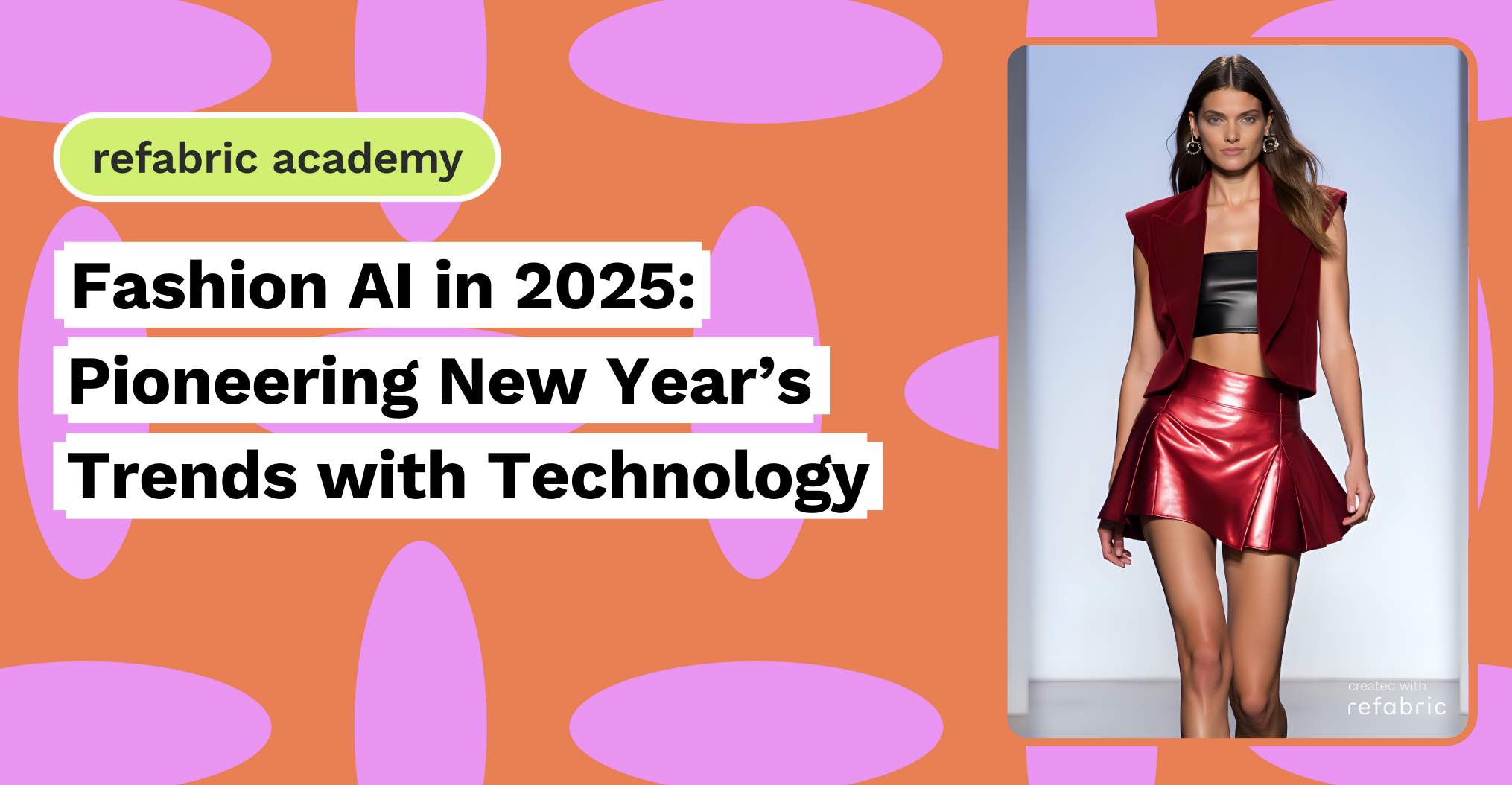2024 marked the rise of fashion AI, with designs becoming bolder than ever before. Each new year brings fresh hopes and possibilities, and fashion evolves accordingly, with new collections preparing us for sunnier days ahead. This exciting transformation is now driven by trend analysis powered by data processing and AI technologies. Fashion AI tools seamlessly integrate this wealth of information, enabling designers to stay ahead of the curve.
In this article, we’ll explore what 2025 has to offer so far, from analytics-based predictions to the influence of major tastemakers and discuss how fashion AI tools empower designers to incorporate these emerging trends into their collections.
Cherries, everywhere…
It is no surprise that cherry’s rich dark color has become the “it color” of the upcoming season. This vampiric but warm tone is sweet and sour at the same time, and there is no doubt that it is both a Gen Z and Millennials favorite, according to the Pinterest Predicts series where Pinterest analyses search engine data of their artsy social media platform. According to Pinterest, keywords such as “cherry vibe”, “cherry bedroom” and “dark cherry red” have been booming on the platform indicating that this will be a dominating color in 2025.
Y2K-2.0? Skorts and Skirts-over-pants are back
According to British Vogue, one-legged looks and skirt-over-pants styles will dominate 2025 collections. These surprising designs create excitement from every angle, with their dynamic layering offering a new perspective each time you look at them. While 2025’s overarching theme leans towards calm yet powerful aesthetics, skorts and skirts-over-pants add an element of illusion in a playful and serene way. Classic colors like beige, black, and white provide confidence and sophistication, while these unconventional cuts inject magic and intrigue into the runway.
Suit and Tie!
In her blog “Style Analytics” Molly brings in analytics data to fashion forecasting. With her wide knowledge of fashion and data analysis, she predicted that looks with ties in women’s outfits will increase by the year 2025. She adds, “Ties may not scream innovation in the world of fashion, but their recent resurgence in streetwear, styled casually and worn by everyone, is hard to ignore.”
Incorporating 2025 Trends into Designs with Fashion AI
The cherry-inspired dark red, the nostalgic appeal of Y2K skorts, and the classic suit-and-tie aesthetic are set to dominate 2025, and Refabric AI tools make it easier than ever to seamlessly merge these trends into cohesive collections. Designers can begin by training fashion AI with specific trend data—uploading images, textures, and patterns inspired by cherries, Y2K archives, and tailored menswear. This personalized training ensures the fashion AI understands the nuances of these themes, allowing it to generate designs that reflect both the designer’s creative vision and the trends’ essence.
Using Refabric’s advanced editing tools, designers can easily reimagine and refine their creations. For instance, skorts inspired by Y2K aesthetics could be enhanced with the cherry color for a modern twist, or suit-and-tie ensembles could be reinvented with unexpected textures or bold, dark red accents. Designers can also experiment with right prompting, using specific instructions to create unique iterations of garments; for example, “Generate a cherry-red skort with a Y2K metallic finish” or “Reimagine a classic suit with a playful Y2K-inspired skort silhouette.” With these fashion AI tools, designers can push creative boundaries while maintaining trend relevancy, resulting in collections that feel both innovative and effortlessly on-trend for 2025.
The Future of Fashion with AI
Fashion AI has revolutionized the industry, and 2024 marked a significant turning point with its bold and innovative designs. As we step into 2025, the synergy between data-driven insights and creative vision has never been stronger. Tools like Refabric empower designers to effortlessly incorporate emerging trends like cherry-inspired hues, Y2K skorts, and reimagined suit-and-tie ensembles into their collections, ensuring they remain ahead of the curve.
This seamless integration of fashion AI technologies allows for deeper trend analysis, optimized production, and boundless creativity. With every passing year, fashion evolves, adapting to societal shifts and technological advancements. In 2025, designers and tastemakers are armed with unprecedented tools to bring fresh ideas to life, setting the stage for an era where innovation and artistry go hand in hand. Fashion AI isn’t just shaping collections; it’s transforming the way we imagine the future of style.
